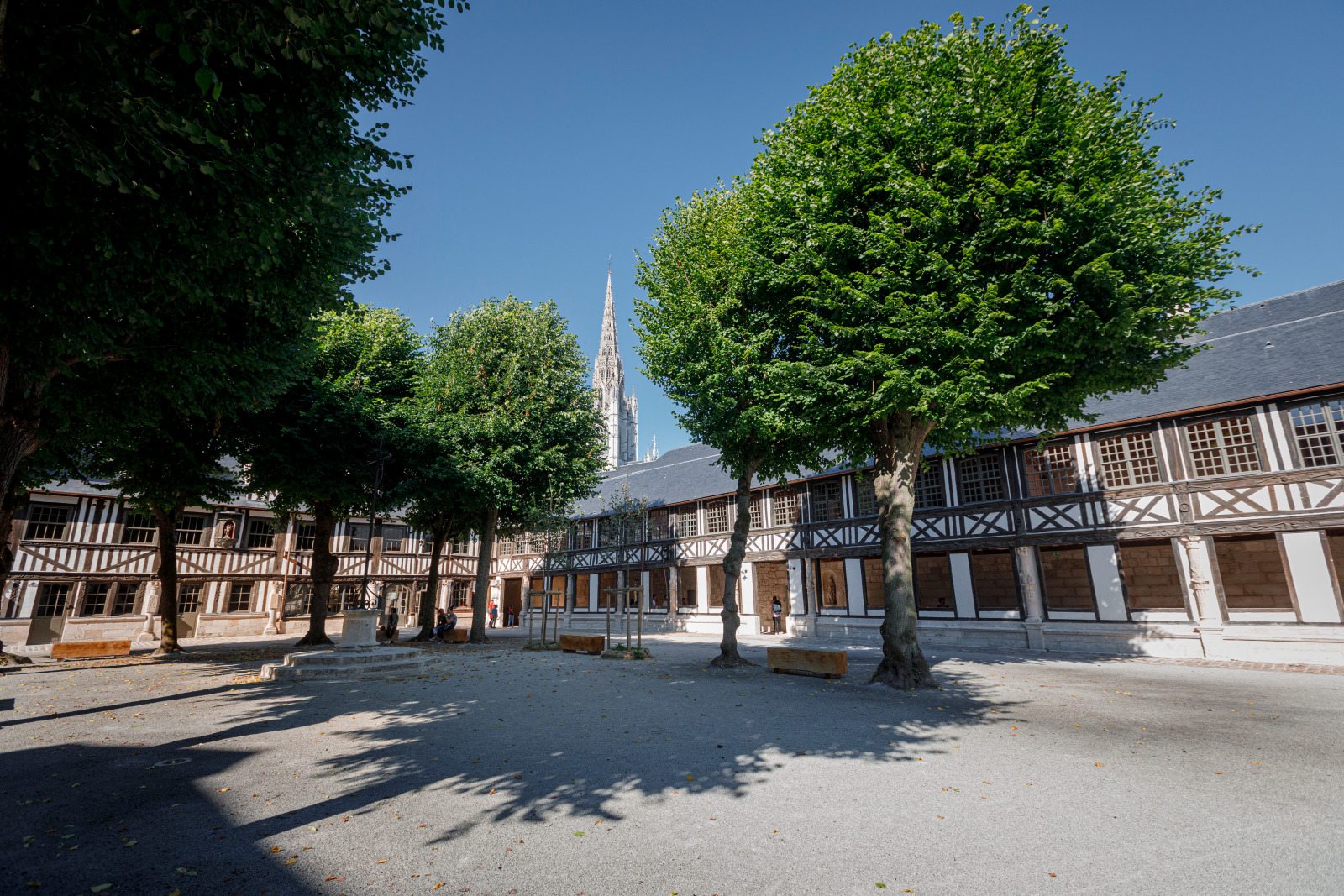
An ossuary and its famous danse macabrev
During the 14th century, war, famine and the Plague decimated the population as never before. In the densely populated parish of Saint-Maclou, a new cemetery was created: the Grand Aître [Large Churchyard]. By the 16th century, the cemetery had become overcrowded, so galleries were built around its perimeter to store skeletal remains.
The walls of the galleries were decorated with macabre designs, including skulls, coffins and gravediggers’ tools. The stone columns depict a danse macabre that is unique in Europe. Death leads the living in a funereal yet poetic dance.
Agenda

Something for everyone
Join a guided tour or opt for “The Cat and the Gravedigger” audio-tour to make the most of your visit around the galleries of this former ossuary that is sure to fascinate and intrigue in equal measure.
Wander around the inner courtyard and admire the macabre motifs, which have been carefully restored. You won’t miss a thing, from the three-faced skull carved into the playground bell to the churchyard’s infamous mummified cat!
From graveyard to a place for the living
During the 17th century, the Aître Saint-Maclou became an educational establishment. It opened as a school for boys, then a school for girls and finally the École des Beaux-Arts de Rouen [Rouen Fine Arts School] from 1940.
The site has now reopened to the public following extensive renovation work in 2018–2020. The famous inner courtyard has staged large-scale theatre productions and open air shows.


Crafts and gastronomy
Within the Aître’s South Gallery, the Café Hamlet’s menu celebrates the region’s culinary heritage, offering creative, local dishes. The East Gallery features the traditional skills known in French as the Arts du Feu: pottery, glasswork, metalwork, etc.



